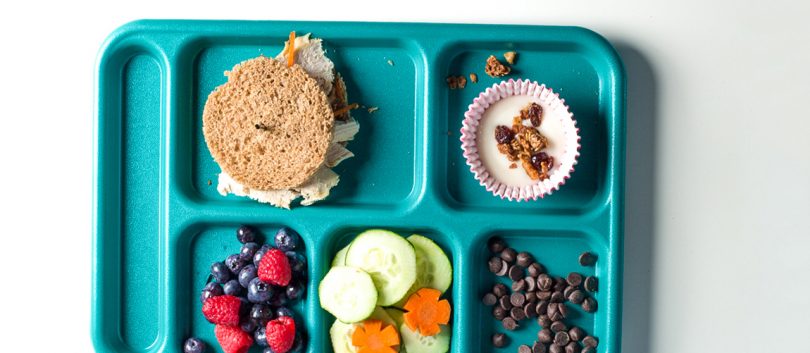Getting kids to eat what’s on their plate is an everyday battle for many parents. Now, the federal government is joining the fight by implementing new school lunch requirements in an effort to help kids eat healthier.
Beginning this school year, school cafeterias participating in the federal school lunch program will be required to serve “whole-grain rich” breads and pastas, meaning those items contain at least 50 percent whole grain meal and/or flour.
School lunches will also have to adhere to new sodium restrictions (1,230 mg per meal for grades K-5, 1,360 mg for grades 6-8, and 1,420 mg for grades 9-12), and there are new nutrition guidelines for snacks sold during the school day.
These are the latest changes to be rolled out as part of the Healthy Hunger-Free Kids Act of 2010 , administered by the U.S. Department of Agriculture. The legislation enabled the USDA to make major reforms to what foods could be served in school cafeterias, with the goal of reducing childhood obesity.
Some school districts are ahead of the changes because they began adding whole grains to their menus years ago. In general, the switch from white to wheat bread has not been a hit with students.
“[Students] are not sold on that brown bread at all,” says Julia Bryant, director of food and nutrition services with Hampton City Schools. “We found that out during focus groups and by looking in the trash can.”
Hampton now uses lighter wheat flour.
“We are always cognizant of what that bread is going to look like in terms of color,” Bryant says.
The Hampton, Norfolk and Williamsburg-James City County school districts have already taken steps to lower sodium levels in their lunches and are on track to meet this year’s new requirement.
“The [food] industry has done a great job reformulating products to meet our nutritional guidelines,” says Helen Phillips, Norfolk’s senior director of school nutrition.
But two future reductions, scheduled in 2017 and 2022, are worrying food service managers.
The proposed 2017 levels cut sodium levels to just 935 mg for K-5 students, with small increases for older students. 2022’s changes are even lower, at a meager 640mg for K-5 students. Phillips believes those levels will be readjusted because of the difficulty of meeting them.
The new Smart Snacks in School requirements could have a major financial impact on sales from cafeteria a la carte items, vending machines and school fundraisers. All snacks sold during the school day have to meet new calorie, sodium, fat and sugar limits. That means school clubs can no longer sell candy bars between classes, and students will be limited to healthier choices, such as baked chips and whole-grain cookies.
Students may not embrace the changes, but the new standards are intended to help reduce America’s childhood obesity epidemic.
“I think the changes we are making are a good thing,” says Jane Haley, supervisor of child nutrition services with Williamsburg-James City County Schools. “The changes we are making now should give the students a good foundation for their future choices. The school breakfast and lunch programs provide meals that demonstrate good examples of healthy choices students can make in their daily food selections. Hopefully these changes will be ones that the students practice well into their future.”

